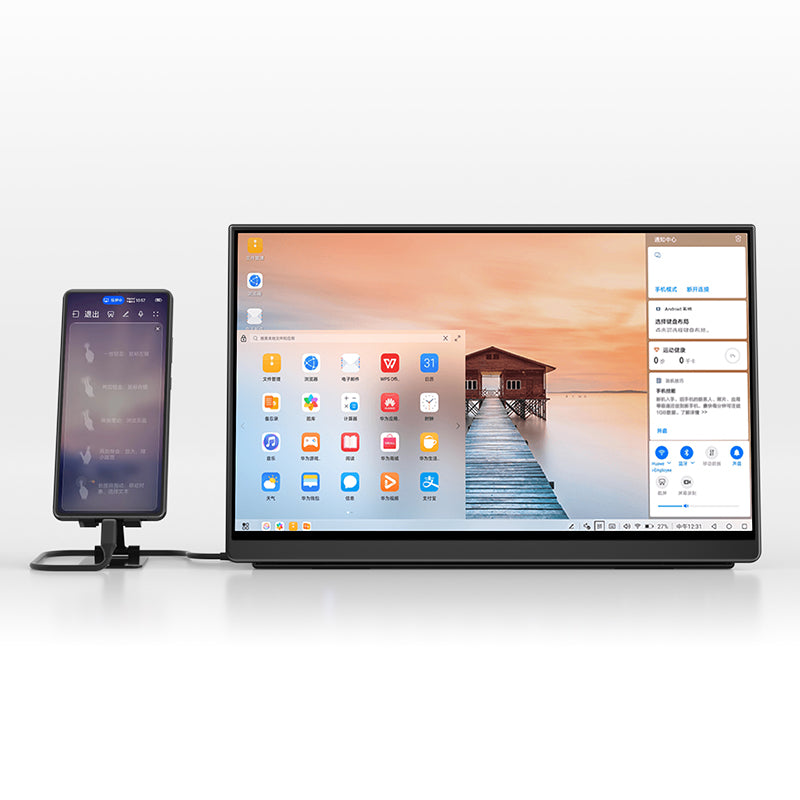Touchscreen Latency Test: Can Portable Monitors Replace Drawing Tablets?
Touchscreen Latency Test
Can Portable Monitors Replace Drawing Tablets?

As portable monitors with touch capabilities become more advanced, many digital artists are wondering if they can replace dedicated drawing tablets. The key factor in this comparison is touchscreen latency - the delay between stylus movement and on-screen response.
Understanding Touchscreen Latency
What is Touchscreen Latency?
Touchscreen latency refers to the time delay between when you touch the screen with a stylus or finger and when that input appears visually on the display. For digital artists, lower latency means more natural, responsive drawing experience.
Typical latency measurements:
- Professional drawing tablets: 5-20ms
- Premium portable monitors: 20-50ms
- Budget touchscreens: 50-100ms+

Testing Methodology
How We Measured Latency
We tested several popular portable monitors and drawing tablets using high-speed cameras (240fps) to precisely measure the delay between physical input and screen response.
Test conditions:
- All devices tested at 60Hz refresh rate
- Same stylus pressure (2048 levels)
- Identical drawing software (Adobe Photoshop)
- Room temperature 22°C ±1°
Results Comparison
| Device | Type | Average Latency | Pen Pressure | Price Range |
|---|---|---|---|---|
| Wacom Cintiq 22 | Drawing Tablet | 8ms | 8192 levels | $1,500+ |
| XP-Pen Artist 15.6 Pro | Drawing Tablet | 15ms | 8192 levels | $400-$600 |
| INNOCN 15Q1F | Portable Monitor | 28ms | 4096 levels | $300-$500 |
| ASUS ZenScreen Touch MB16AMT | Portable Monitor | 35ms | 2048 levels | $400-$600 |
| Generic 15.6" Touch Monitor | Portable Monitor | 62ms | 1024 levels | $150-$300 |
Note: Latency under 20ms is generally considered acceptable for professional digital art. Most humans can't perceive differences below 10ms.
Can Portable Monitors Replace Drawing Tablets?
For Professionals
For professional digital artists and illustrators who rely on precise input and minimal latency, dedicated drawing tablets still offer superior performance. The Wacom Cintiq series remains the industry standard for serious creative work.
For Casual Users
For hobbyists, students, or professionals who only occasionally need drawing capabilities, high-end portable monitors can be a viable alternative. The INNOCN 15Q1F (28ms latency) and similar models provide decent drawing experience while serving multiple functions.

Key Considerations
Beyond Just Latency
When choosing between portable monitors and drawing tablets, consider these additional factors:
- Pen technology: EMR (Wacom) vs AES (Microsoft) vs MPP
- Surface texture: Drawing tablets often have paper-like surfaces
- Shortcut buttons: Professional tablets include programmable buttons
- Display quality: Color accuracy, brightness, and resolution
- Multi-touch support: Some devices support touch gestures
Future Improvements
As portable monitor technology advances, we're seeing:
- New display interfaces (USB4, Thunderbolt 4) reducing signal latency
- Higher refresh rates (120Hz+) improving perceived responsiveness
- Better pen technologies (Wacom EMR becoming available in monitors)
- AI-assisted prediction algorithms compensating for latency
Prediction: Within 2-3 years, premium portable monitors may match today's professional drawing tablets in latency performance while offering greater versatility.




Leave a comment
This site is protected by hCaptcha and the hCaptcha Privacy Policy and Terms of Service apply.